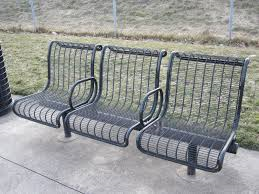Architectural Exclusion: A Summary of Schindler’s Article
Architectural exclusion is when man-made, built environments are designed to exclude certain types or groups of people. Schindler gives several examples of this throughout the article. One of the examples of this would be exclusion through the subway system. Often, rich communities in Atlanta are against allowing MARTA to have stops in their neighborhoods, because they know that this will encourage the poor and people of color to come there. It will also stop them from getting jobs in the area because they will not have a ride to work. Schindler also talks about how white residents in a suburban community once had a road closed because it gave a nearby, black neighborhood access to their area. They even covered it up by saying that closing the road would help reduce traffic.
According to the N.Y. Times article “Where has the Northern State Gone?” written by Philip Lutz, Robert Moses, known as the “Master Builder” of New York, wanted to build “low-hanging overpasses on the Long Island parkways that led to Jones beach…so that buses could not pass under them.” Schindler then explains that this affected the people of color and poor people because they were that ones that rode the bus the most. This means they were excluded from going to Jones Beach.
Architectural exclusion also, serves as a regulator, keeping people of color and poor people separated from everyone else. An example of this would be the fact that park benches are designed to have armrests so that homeless people will not sleep comfortably on them. This type of regulation is discreet because to most people, they assume the purpose of the armrests are to divide the benches. Schindler explains that this shows how effective this type of regulation is and how it occurs with no one suspecting it is taking place. Another example Schindler provides is architecture being used to hide neighborhoods from non-residents and to discourage them from entering. They can even be designed to keep the residents in. One way they do this is a residential parking permit requirement. This keeps the resident from wanting to invite guests over, because they know they will have to pay for a guest permit so that their friends can park in the street. The roads of these neighborhoods are often curvy and full of dead ends, which confuses non-residents and makes them not want to enter the area.
There are also regulations in transit, street, and highways that keep visitors out of these communities. Schindler gives an example from Lessig, which says that putting a highway between two neighborhoods prevents them from interacting with each other. Highways were put in the middle of cities to get rid of the low income and black communities. One-way streets are used to keep traffic out of certain areas, mainly the wealthy ones. Bridge exits and highway ramps were used to direct traffic in the direction away from the rich neighborhoods to keep non-residents out. This was very inconvenient for drivers, taking them out of the way to get to where they were trying to go. Some of these communities took matters into their own hands to keep their neighborhoods exclusive. In Darien, Connecticut, they don’t have many street signs because they want to confused visitors and keep them from finding the rich neighborhoods. In Bolinas, California, people would remove the signs telling drivers the location of the city, so that they would not have visitors. Architectural exclusion can easily be overlooked, because it is often covered up by the people designing the environment where it occurs.
